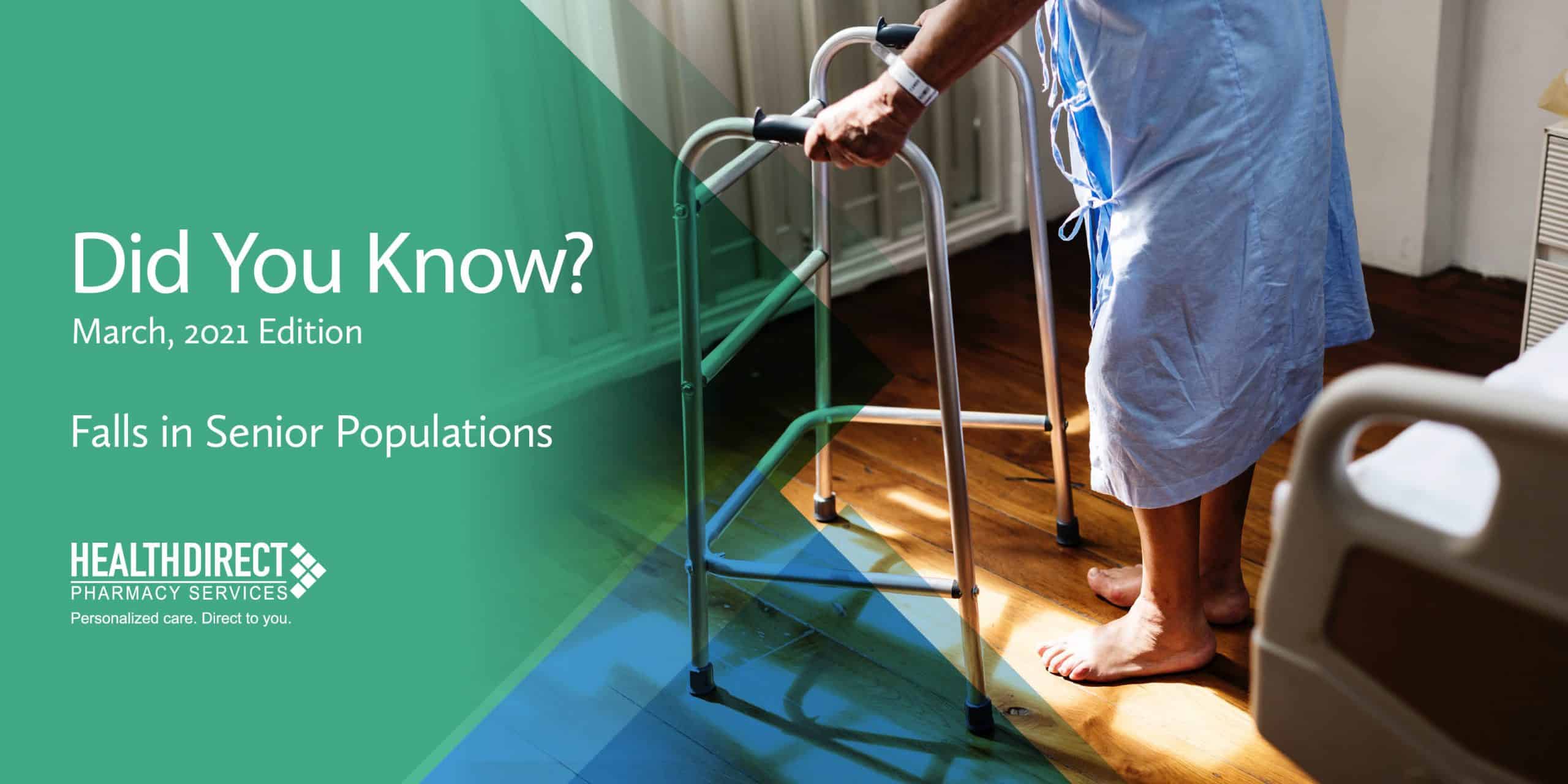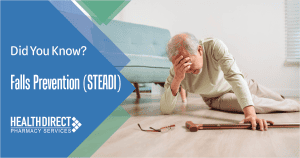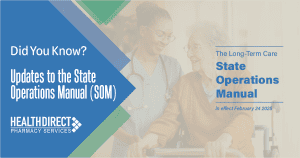According to the CDC, fall injuries among older adults account for almost $50 billion in medical costs each year. Injuries from falls can lead to hospitalizations, nursing home admissions, and deaths. In fact, one out of every 5 falls causes a serious injury such as a broken bone or a head injury. More than 95% of hip fractures are caused by falling and the most common cause of traumatic brain injuries are falls. Fall death rates in the U.S. increased 30 % from 2007-2016 for older adults. The CDC estimates that if this rate continues, we can anticipate 7 fall deaths every HOUR by 2030! [1]
Fall risk screening, assessment, and interventions are essential to help decrease a patient’s fall risk. Risk factors for falls can include age > 65 years, previous falls, certain disease states, medications and polypharmacy, and unfavorable environments. Medical conditions associated with an increased fall risk are arthritis, heart disease, CVA, muscle weakness, poor balance or vision, Parkinson’s, dementia, depression, diabetes, infections, pain, seizures, and foot problems.
Interventions to reduce risk due to medical conditions [2]
- Optimize treatment of the medical conditions.
- Referral to physical therapy. Utilize an evidence-based exercise or fall prevention program.
- Involve occupational therapy. They can help to identify living hazards and offer solutions such as removing loose carpets/rugs, adding lights in dimly lit areas, installing and utilizing handrails and grab bars in the shower/tub area, and use of no slip decals or rubber mats in these areas.
- Referral to ophthalmologist for visual impairment issues.
- Provide education on shoe fit, traction, insoles, and heel height for foot issues. Consider involving a podiatrist.

Certain medications can be associated with higher risk of falls
The table below lists common medication classes that can increase fall risk. To minimize fall risk due to medications, consider the following:
- A detailed medication regimen review from your consultant pharmacist can be a very valuable tool. They can look for safer alternatives, look for drug interactions that may be increasing fall risk, discontinue unnecessary medications, and ensure proper doses are being utilized to minimize fall risk.
- Rule of thumb: ensure lowest effective doses are being utilized for appropriate duration. If initiating a medication, start low and go slow.
- Many of the medications on the Beers list are associated with an increased falls risk. Where possible, try to utilize a safer alternative. If a medication is deemed necessary, consider utilizing for shortest duration necessary while closely monitoring for adverse effects. For a complete list, refer to American Geriatrics Society 2019 Updated AGS Beers Criteria® for Potentially Inappropriate Medication Use in Older Adults. [3] Table 7 includes a list of medications with strong anticholinergic properties that can increase fall risk.
- Psychoactive medications (including sedative hypnotics, anxiolytics, antidepressants) and antipsychotics should be minimized, with appropriate tapering if indicated.
| Medication Category | Examples | Mitigation Strategies |
|---|---|---|
| Blood pressure medications (Diuretics, ACE inhibitors, ARBs, Calcium Channel Blockers, Beta Blockers, Alpha Agonists, Alpha Blockers,) | Diuretics: HCTZ, Furosemide ACE Inhibitors: Lisinopril, Ramipril ARBs: Losartan, candesartan CCBs: Diltiazem, Verapamil, Amlodipine BB: Metoprolol, Carvedilol, Propranolol Alpha Agonists: Clonidine Alpha Blockers: Terazosin, Doxazosin | Avoid overtreatment of blood pressure. Goal BP is <150/90 for those without diabetes/CKD. Goal is <140/90 for those with CKD/diabetes. [4] Consider utilizing cardio-selective beta blockers instead of non-selective beta blockers if a BB is indicated. Alpha agonists such as Clonidine are on the Beers list as they can cause CNS effects and orthostatic hypotension. Alpha blockers should be avoided for 1st line treatment of HTN due to orthostasis. If using for BPH, consider utilizing a prostate-specific alpha blocker such as Tamsulosin (Flomax). |
| Antipsychotics (Conventional and Atypical) | Conventional: haloperidol, perphenazine Atypical/Second Generation: Seroquel, Abilify, Risperdal | Consider utilizing atypical antipsychotics in place of conventional. Conventional antipsychotics are associated with increased risk of orthostatic hypotension, drowsiness. |
| Antidepressants (SSRI’s, SNRI’s, Tricyclics) | SSRIs: sertraline, citalopram, escitalopram, paroxetine SNRIs: duloxetine, venlafaxine Tricyclics: amitriptyline, doxepin, nortriptyline | Paroxetine is one of the SSRI’s that has stronger anticholinergic properties than the others. Consider utilizing a different SSRI if one is indicated. Tricyclics can be highly anticholinergic, sedating, and can cause orthostatic hypotension. Beers list recommends avoiding use. |
| Benzodiazepines | Diazepam, Clonazepam, Alprazolam, Lorazepam | Doses ≥ 3 mg/day in diazepam equivalents increased the risk of hip fracture by 50%. Studies have demonstrated the highest risk if within the initial 2 weeks of use and after more than 1 month of continuous use. [5] Consider utilizing for shortest duration if use is deemed necessary. Long-acting agents carry a risk for accumulation and prolonged effects, but short-acting agents have a quick onset which can also be problematic. Both have similar falls rates. |
| Sedatives/Hypnotics | zolpidem, eszopiclone, zaleplon | Avoid use. Similar side effects to the benzodiazepines with minimal improvement in sleep latency and duration. |
| Opioids | morphine, oxycodone, hydrocodone, fentanyl, methadone, etc. | Beers list recommends avoiding in patients at risk for falls unless in the setting of severe pain. Consider tapering other medications that may also have adverse CNS effects if an opioid must be used. |
| Anticonvulsants | Depakote, carbamazepine | Use lowest effective doses and monitor closely. |
| Muscle Relaxants | cyclobenzaprine, metalaxone | Most are poorly tolerated by the elderly and have anticholinergic effects and increased fall risk. Questionable efficacy. Consider avoiding use or using for shortest duration necessary. |
| Others | Diphenhydramine, promethazine, hydroxyzine, meclizine, oxybutynin, dicyclomine | Consider utilizing a second-generation antihistamine for allergies such as loratadine if one is indicated. Avoid use of diphenhydramine for sleep. If a medication is needed for urinary incontinence, consider utilizing one that does not cross the blood-brain barrier as easily as oxybutynin can. Consider using one of the newer agents such as solifenacin or trospium which are less likely to cross the BB barrier, causing adverse CNS effects. |
References
- Centers for Disease Control and Prevention. (2021, March 17). Falls Among Older Adults: An Overview.
- Clinical Resources
- “American Geriatrics Society 2019 Updated AGS Beers Criteria® for Potentially Inappropriate Medication Use in Older Adults.” Journal of the American Geriatrics Society, 29 Jan. 2019, pp. 1–21., doi:10.1111/jgs.15767.
- Am Fam Physician. 2014 Oct 1;90(7):503-504
- Wang PS. Bohn RL. Glynn RJ. Mogun H. Avorn J. Hazardous benzodiazepine regimens in the elderly: effects of half-life, dosage, and duration on risk of hip fracture. Am J psych. 2001;158(6):892-8.




